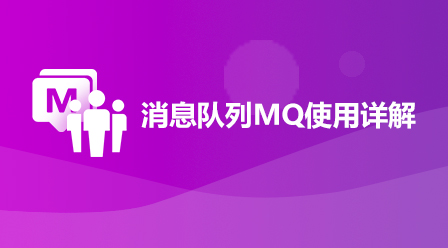aggregateexception用于封装并行或异步操作中的多个异常,确保不丢失任何错误信息;2. 处理方式包括遍历innerexceptions或使用handle()方法选择性处理;3. 在async/await中,单个任务异常会被自动解包,而task.whenall等场景需显式捕获aggregateexception;4. 最佳实践包括始终检查innerexceptions、合理使用handle()、调用flatten()展平嵌套异常、记录完整日志,并避免在任务内部吞掉异常;5. 理解异常传播机制和集中日志记录是构建可靠异步系统的关键。

C# 中的
AggregateException
Task.WhenAll
Parallel.For
ForEach
AggregateException
AggregateException
InnerExceptions
在C#中处理多任务异常,特别是当涉及到
Task
Parallel
AggregateException
一个典型的场景是使用
Task.WhenAll
Task.WhenAll
Task
Faulted
await
Result
AggregateException
处理它的基本模式是这样的:
using System;
using System.Collections.Generic;
using System.Linq;
using System.Threading.Tasks;
public class TaskExceptionHandling
{
public async Task RunParallelTasksWithErrors()
{
var task1 = Task.Run(() =>
{
Console.WriteLine("Task 1 started.");
throw new InvalidOperationException("Something went wrong in Task 1!");
});
var task2 = Task.Run(() =>
{
Console.WriteLine("Task 2 started.");
// Simulate some work
Task.Delay(100).Wait();
Console.WriteLine("Task 2 finished successfully.");
});
var task3 = Task.Run(() =>
{
Console.WriteLine("Task 3 started.");
throw new ArgumentNullException("Parameter was null in Task 3!");
});
try
{
// await Task.WhenAll will throw AggregateException if any task faults
await Task.WhenAll(task1, task2, task3);
Console.WriteLine("All tasks completed successfully.");
}
catch (AggregateException ae)
{
Console.WriteLine("\nCaught an AggregateException:");
// Option 1: Iterate and log all inner exceptions
foreach (var ex in ae.InnerExceptions)
{
Console.WriteLine($"- Inner Exception: {ex.GetType().Name} - {ex.Message}");
}
// Option 2: Use the Handle method for more granular control
ae.Handle(innerEx =>
{
if (innerEx is InvalidOperationException)
{
Console.WriteLine($" Handled InvalidOperationException: {innerEx.Message}");
return true; // Indicate that this exception is handled
}
else if (innerEx is ArgumentNullException)
{
Console.WriteLine($" Handled ArgumentNullException: {innerEx.Message}");
return true; // Indicate that this exception is handled
}
// If we return false, or if no handler matches, the AggregateException
// (or a new one containing unhandled exceptions) will be re-thrown.
return false; // This exception is not handled by this specific handler
});
// After Handle(), if any inner exception was not handled (returned false),
// the AggregateException might be re-thrown or the program might continue,
// depending on what was returned from the Handle predicate.
// If all are handled, the AggregateException is considered handled.
Console.WriteLine("AggregateException handling complete.");
}
catch (Exception ex)
{
// This catch block would only be hit if the AggregateException
// was re-thrown, or if another non-AggregateException occurred.
Console.WriteLine($"Caught a general exception: {ex.Message}");
}
}
public static async Task Main(string[] args)
{
var handler = new TaskExceptionHandling();
await handler.RunParallelTasksWithErrors();
}
}这段代码展示了两种常见的处理方式:直接遍历
InnerExceptions
Handle()
Handle()
这背后其实体现了一种哲学:在并发环境中,我们不希望丢失任何重要的错误信息。试想一下,如果你启动了十个独立的任务,其中有五个都失败了,如果系统只给你抛出第一个失败任务的异常,那么你就完全不知道另外四个任务也出了问题,这在调试和问题排查时会非常麻烦,甚至可能导致数据不一致或逻辑错误。
AggregateException
AggregateException
AggregateException
在我看来,这种设计虽然初次接触时可能会觉得有点复杂,因为它要求我们遍历一个集合,而不是直接处理一个异常,但从长远来看,它极大地提升了并发程序的可靠性和可维护性。它避免了“沉默的失败”,让每一个错误都有机会被发现和处理。
处理
AggregateException
一个常见的陷阱就是只捕获AggregateException
InnerExceptions
catch (AggregateException ae) { Console.WriteLine(ae.Message); }ae.Message
InnerExceptions
ae.InnerExceptions
ae.Handle()
另一个陷阱是过度依赖Handle()
Handle()
Func<Exception, bool>
true
false
Handle()
false
AggregateException
AggregateException
Handle()
Handle()
至于最佳实践:
InnerExceptions
ForEach
Handle()
Handle()
Flatten()
AggregateException
AggregateException
Flatten()
Task.Run
AggregateException
AggregateException
在现代C#的异步编程中,
async/await
当你在一个
async
await
Task
Task
Faulted
await
AggregateException
AggregateException
async/await
catch
AggregateException
public async Task SingleTaskErrorExample()
{
try
{
await Task.Run(() => throw new InvalidOperationException("Single task error!"));
}
catch (InvalidOperationException ex) // Directly catches InvalidOperationException
{
Console.WriteLine($"Caught single task error: {ex.Message}");
}
catch (AggregateException ae) // This catch block would typically NOT be hit by await
{
Console.WriteLine("This AggregateException catch is usually not hit by await for single tasks.");
}
}然而,当你的场景涉及到多个任务并行执行,并且你等待它们全部完成时(比如使用
Task.WhenAll
AggregateException
Task.WhenAll
Task
Result
await
AggregateException
所以,优雅地管理和传播任务异常的关键在于:
await
await
WhenAll
AggregateException
AggregateException
InnerExceptions
async/await
try-catch
在我处理过的项目中,我常常会看到一些团队在异步代码中,尤其是涉及到大量并行操作时,忽略了
AggregateException
AggregateException
async/await
以上就是C#的AggregateException是什么?如何处理多任务异常?的详细内容,更多请关注php中文网其它相关文章!

每个人都需要一台速度更快、更稳定的 PC。随着时间的推移,垃圾文件、旧注册表数据和不必要的后台进程会占用资源并降低性能。幸运的是,许多工具可以让 Windows 保持平稳运行。




Copyright 2014-2025 https://www.php.cn/ All Rights Reserved | php.cn | 湘ICP备2023035733号